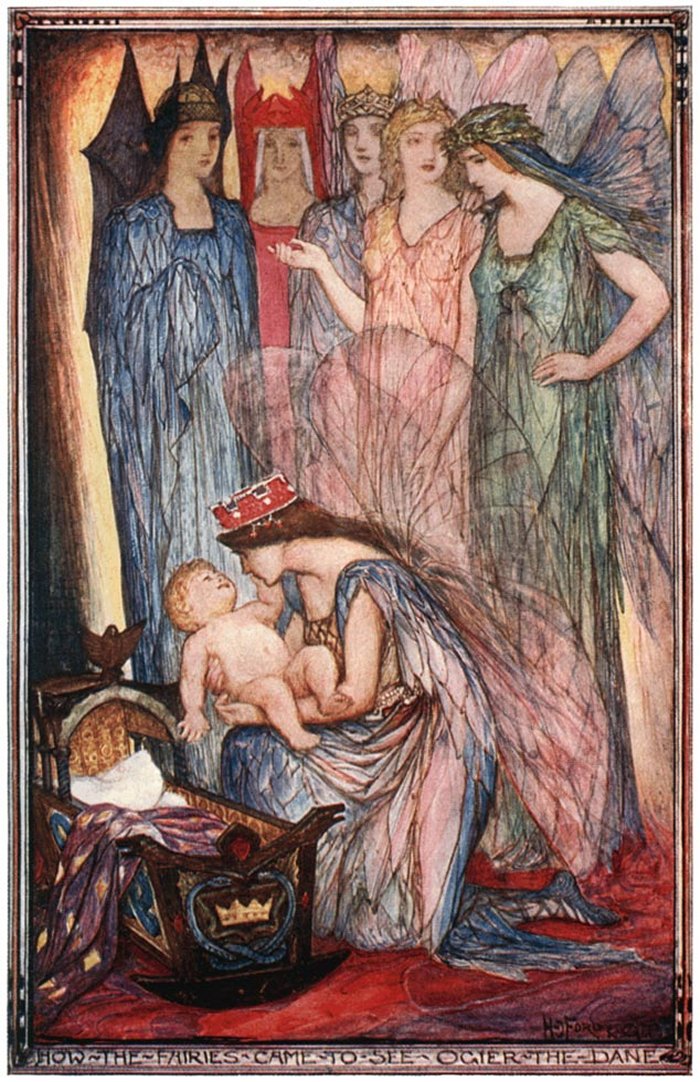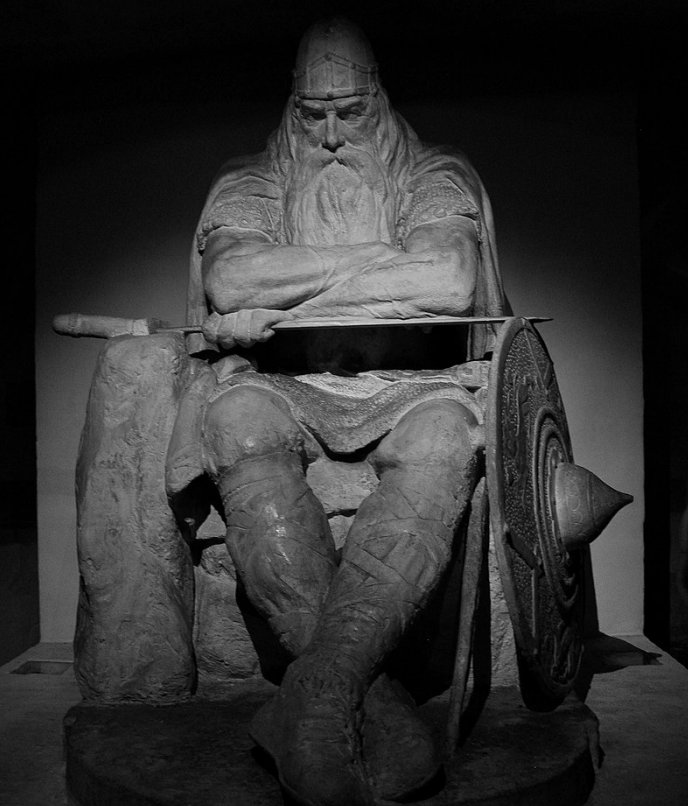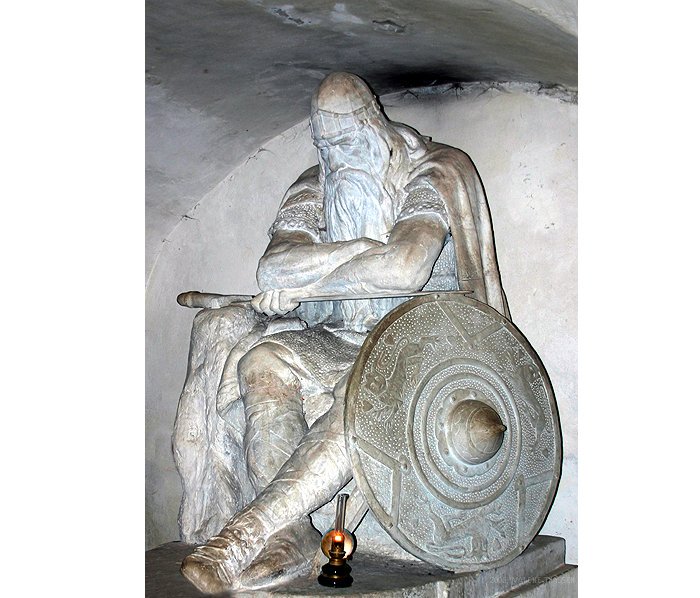Legend Of Sleeping Hero Holger Danske: Viking Warrior Who Never Died
A. Sutherland - AncientPages.com - Holger Danske, also called Holger or Ogier the Dane, was a fearsome Viking warrior.
His entire life, from birth to death, is shrouded in mystery. According to ancient legends, Holger Danske never died. Instead, he sleeps in the dark cellar of Kronborg Castle at Elsinore, the setting of Shakespeare's Hamlet.
How the Fairies Came to See Ogier the Dane by Henry Justice Ford (1921) "And then the sixth fairy, the youngest and the most beautiful of all, who was none other than Morgan le Fay, the Queen of Avalon, caught up the child, and danced about the room in rapturous joy."
Holger Danske's history is difficult to trace because almost nothing is known about him. The information we possess is based on legends and myths.
The first mention of the sleeping hero Holger Danske comes from the Chanson de Roland (Songs of Roland), an epic poem based on the Battle of Roncevaux in 778, during the reign of Charlemagne. It is the oldest surviving major work of French literature and exists in various manuscript versions, which testify to its enormous and enduring popularity in the 12th to 14th centuries.
There is a prophecy related to the birth of Holger Danske. He was destined to become one of the most fearless warriors, never to be vanquished.
According to a legend linked to Arthurian myth, a Danish king known as Ogier the Dane was taken to Avalon by Morgan le Fay. He returned to rescue France from danger, then traveled to Kronborg castle, where he sleeps until he is needed to save his homeland. Image credit: Luis Antonio Carrasc - CC BY 3.0
According to French and Scandinavian myths, Holger Danske was Geoffrey's son, the first Christian king of Denmark, during the eighth century. He was trained to become a great warrior from an early age. He was very tall, about 213 centimeters (7′).
Legends say Holger possessed an enchanted sword that was given to him by the fairy Morgana. His magical sword was a great weapon that helped him become invincible. When Muslims invaded Danish territory, Holger joined forces with Charles Martel (c. 688 – 22 October 741), the Duke and Prince of the Franks.
Together with Charles Martel, he fought against the Muslims at Poitiers in AD 732. At one point in his life, he was captured and became a hostage of Charlemagne. Holger eventually became Charlemagne's vassal and developed a fearsome reputation. Yet, Holger could also be merciful.
Hans Peder Pedersen-Dan's statue of Holger Danske at Kronborg castle, Denmark
For example, he even forgave Charlemagne's son for killing his son, Baldwin, with a chessboard.
Holger Danske's legend became famous thanks to Hans Christian Andersen, who said that Holger never died. Instead, he is a sleeping hero residing in the dark cellar, where no one ever goes, of Kronborg Castle at Elsinore, the setting of Shakespeare's Hamlet.
Dressed in full armor made of iron and steel, Holger sits before a table, resting his head on his arm. His beard has grown long into the table as he slumbers and dreams of Denmark.
Every Christmas Eve, an angel of God assures him that what he has dreamed is accurate and that he can safely go back to sleep because Denmark is in no real danger. But if danger ever does come, then old Holger Danske will arise, breaking the table in pieces as he pulls out his beard! And then he will come forward and strike out and be heard in all the lands of the Earth.
Written by – A. Sutherland - AncientPages.com Senior Staff Writer
Updated on June 25, 2024
Copyright © AncientPages.com All rights reserved. This material may not be published, broadcast, rewritten or redistributed in whole or part without the express written permission of AncientPages.com
More From Ancient Pages
-
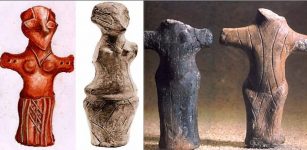 Mysterious Vinca Culture Is Among The Most Advanced Prehistoric Societies In Europe
Civilizations | Jun 23, 2020
Mysterious Vinca Culture Is Among The Most Advanced Prehistoric Societies In Europe
Civilizations | Jun 23, 2020 -
 Sinuses Reveal More About The Evolution Of Ancient Humans
Archaeology | Oct 29, 2022
Sinuses Reveal More About The Evolution Of Ancient Humans
Archaeology | Oct 29, 2022 -
 Statue Of Unknown Mythical Beast With Four Wings Discovered
Archaeology | Sep 1, 2022
Statue Of Unknown Mythical Beast With Four Wings Discovered
Archaeology | Sep 1, 2022 -
 New Type Of Early Previously Unknown Human Discovered In Israel
Archaeology | Jun 29, 2021
New Type Of Early Previously Unknown Human Discovered In Israel
Archaeology | Jun 29, 2021 -
 Enigma Of Giant Statue Of Kouros Of Apollonas
Featured Stories | Jul 18, 2019
Enigma Of Giant Statue Of Kouros Of Apollonas
Featured Stories | Jul 18, 2019 -
 Rare Early Bronze Age Axe Discovered In Slovakia
Archaeology | Jul 2, 2022
Rare Early Bronze Age Axe Discovered In Slovakia
Archaeology | Jul 2, 2022 -
 Mystery Of The Unbreached Burial Chamber Inside A Little-Known Pyramid In The Dashur Complex
Featured Stories | Mar 18, 2022
Mystery Of The Unbreached Burial Chamber Inside A Little-Known Pyramid In The Dashur Complex
Featured Stories | Mar 18, 2022 -
 Lunar Society: Great Scientists Of The 18th Century Who Changed The World
Featured Stories | Jul 13, 2018
Lunar Society: Great Scientists Of The 18th Century Who Changed The World
Featured Stories | Jul 13, 2018 -
 Berserkers In Mesopotamia, Europe And India: Old Tradition Of Mad Fighting Dates Back At Least 3000 BC
Ancient Traditions And Customs | Jun 6, 2017
Berserkers In Mesopotamia, Europe And India: Old Tradition Of Mad Fighting Dates Back At Least 3000 BC
Ancient Traditions And Customs | Jun 6, 2017 -
 Medieval Sword Found In The Sea Off The Carmel Coast Was Probably Used In Combat 800 Years Ago
News | Aug 4, 2023
Medieval Sword Found In The Sea Off The Carmel Coast Was Probably Used In Combat 800 Years Ago
News | Aug 4, 2023 -
 Curious Pre-Columbian Clay Figurines With Smiling Faces From Veracruz
Ancient Mysteries | Jan 29, 2018
Curious Pre-Columbian Clay Figurines With Smiling Faces From Veracruz
Ancient Mysteries | Jan 29, 2018 -
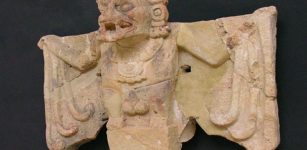 Camazotz: ‘Death Bat’ Vampire God In Ancient Maya Beliefs
Featured Stories | Jun 8, 2017
Camazotz: ‘Death Bat’ Vampire God In Ancient Maya Beliefs
Featured Stories | Jun 8, 2017 -
 Archaeologists Discover Gloucestershire’s Hidden Treasures
Archaeology | May 14, 2024
Archaeologists Discover Gloucestershire’s Hidden Treasures
Archaeology | May 14, 2024 -
 Who Built Massive Astronomically Oriented Buildings In The Most Ancient Times?
Civilizations | Nov 27, 2018
Who Built Massive Astronomically Oriented Buildings In The Most Ancient Times?
Civilizations | Nov 27, 2018 -
 World’s First ‘Cash Machine’ Discovered In A Wall Of An Ancient Bakery
Archaeology | Apr 1, 2022
World’s First ‘Cash Machine’ Discovered In A Wall Of An Ancient Bakery
Archaeology | Apr 1, 2022 -
 Rise And Fall Of City-States In Ancient Mexico And Peru Influenced By Climate Change
Archaeology | Oct 19, 2015
Rise And Fall Of City-States In Ancient Mexico And Peru Influenced By Climate Change
Archaeology | Oct 19, 2015 -
 Oldest Cyrillic Inscriptions Dated To The Time Of King Simeon the Great – Discovered
Archaeology | May 3, 2023
Oldest Cyrillic Inscriptions Dated To The Time Of King Simeon the Great – Discovered
Archaeology | May 3, 2023 -
 Archaeologists Uncover Secrets Of ‘Vallø Borgring’ Viking Age Circular Fortress
Archaeology | Oct 11, 2015
Archaeologists Uncover Secrets Of ‘Vallø Borgring’ Viking Age Circular Fortress
Archaeology | Oct 11, 2015 -
 Unique Viking Age Hearths Discovered In Tallinn, Estonia
Archaeology | May 11, 2022
Unique Viking Age Hearths Discovered In Tallinn, Estonia
Archaeology | May 11, 2022 -
 Hundreds Of Ancient Ceremonial Sites Discovered Near Aguada Fénix – The Largest And Oldest Maya Monument In Mexico
Archaeology | Nov 8, 2021
Hundreds Of Ancient Ceremonial Sites Discovered Near Aguada Fénix – The Largest And Oldest Maya Monument In Mexico
Archaeology | Nov 8, 2021

